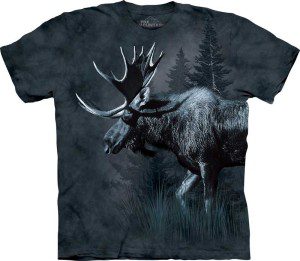How do Moose get so big just eating plants?
Carnivores may be at the top of the food chain, but herbivores are often the bigger guns (or guts) on the ladder. What makes them so big?
For Weird Animal Question of the Week, I took the author’s prerogative to ask how plant-eaters grow so massive on what seems—to the omnivorous human, at least—like light fare.
It’s a complex business, but in a nutshell, herbivores eat a lot and are lower down on the food chain, where there is more energy available.
Take the moose, the largest of the deer species, which lives in northern regions of North America, Europe, and Asia. Its name in Algonquin, a native language of eastern North America, means “twig eater”—not exactly a majestic moniker for a mammal that can weigh in at up to 1,800 pounds (820 kilograms).
But it does reflect moose’s “absolutely phenomenal ability” to get the most out of the foods they eat, Vince Crichton, a retired wildlife biologist at Manitoba Conservation and Water Stewardship in Canada, said via email.
Food Chain Dynamics
Matthew Lewis, senior program officer for African species conservation at WWF, says it all comes down to “trophic levels,” or where an animal sits in the food chain. The higher up you go, the more energy is lost to things like respiration and metabolism.
Plants are primary producers, which means they convert sunlight into energy. Herbivores, such as elephants, are primary consumers, converting plants they eat into energy.
At the top of the food chain are the predators, which eat herbivores and convert them into energy. But, Lewis noted, there’s a 10 percent loss of energy at each stage removed from plants.
So “if you’re living as a carnivore, you have to consume ten times as much to get the same amount of energy you would from eating at the primary level,” Lewis explained.
A carnivore the size of an African elephant, for instance, would have to spend all its time hunting and eating animals its own size just to make up for that energy loss.
And after a while there wouldn’t be much for it to hunt.
“If you look at the Serengeti, you may see millions of wildebeest, and you may see only a few hundred lions at most,” Lewis said.
Related: “The Serengeti Lion.”
That’s because a system that has a huge number of carnivores at the top would be unsupportable: There wouldn’t be enough prey to sustain them.
Since herbivores get energy directly from the source, they’re “the most abundant, most widespread, and typically
Gassy Gorillas
That doesn’t mean herbivores have it easy.
Most vegetarian animals have to eat more or less constantly to keep their energy up. African elephants, for instance, eat 300 pounds (140 kilograms) of food a day.
(Moose are unique among herbivores in that they have a layer of fat and protein to help get them through the cold months, according to the Alaska Department of Fish and Game.)
“A full-grown male silverback gorilla [is] twice as large as a female and will have to eat a lot more,” Lewis added.
What about that big belly you see on a mountain gorilla?
“They’re consuming a lot of vegetation, which produces a lot of gas, so they’re sort of big and bloated,” he said.


Leave A Comment
You must be logged in to post a comment.